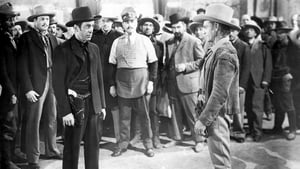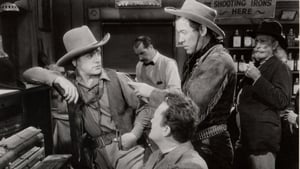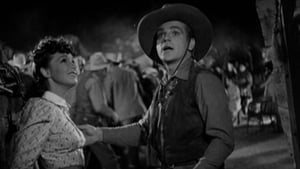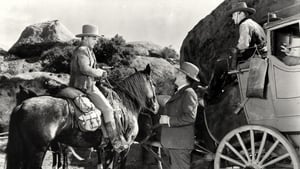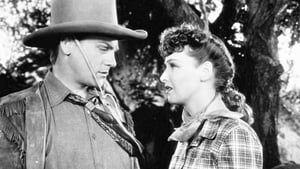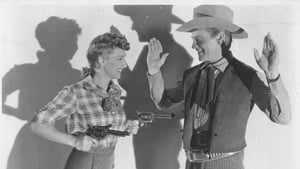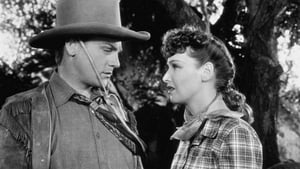Video Sources 0 Views
- The Oklahoma Kid 1939 Colorized

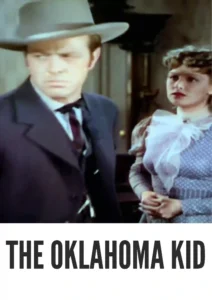
Synopsis
Table of Contents
ToggleGunslingers and Outlaws: The Oklahoma Kid (1939) in Stunning Color

Saddle up for a thrilling ride with The Oklahoma Kid, a classic Western from 1939, now beautifully colorized for a modern viewing experience. Starring James Cagney and Humphrey Bogart, this action-packed film delivers a gripping tale of revenge, justice, and frontier life. Perfect for fans of classic Westerns and those looking to witness Cagney and Bogart in their prime, this HD download brings a timeless piece of American cinema to your screen. Some regions may know this film by alternative titles, so be sure you’ve located the right classic!
The Oklahoma Kid Storyline: A Feud in the Old West
The Oklahoma Kid tells the story of Jim Kincaid (James Cagney), a charismatic and quick-drawing gunslinger, also known as the “Oklahoma Kid.” He arrives in the booming town of Tulsa, Oklahoma, during a period of rapid growth and escalating tensions. His father, Ned Kincaid (Hugh Sothern), a respected newspaper publisher, is embroiled in a bitter feud with Whip McCord (Humphrey Bogart), a ruthless and ambitious land grabber who seeks to control the town through intimidation and violence.As the conflict between the Kincaid family and McCord intensifies, the Oklahoma Kid finds himself caught in the middle, torn between loyalty to his father and his own sense of justice. He must use his skills and cunning to protect his family, challenge McCord’s reign of terror, and bring peace to the turbulent town. The film culminates in a dramatic showdown that tests the Kid’s resolve and ultimately determines the fate of Tulsa. The Oklahoma Kid is a thrilling Western that explores themes of family, honor, and the struggle for law and order in the Wild West.
Movie Cast
The film features a stellar cast of actors who bring this classic Western story to life:
- James Cagney as Jim Kincaid, the Oklahoma Kid
- Humphrey Bogart as Whip McCord
- Rosemary Lane as Jane Hardwick
- Donald Crisp as Judge Hardwick
- Hugh Sothern as Ned Kincaid
Movie Genre
The Oklahoma Kid falls squarely into the Western genre, with elements of action, drama, and romance that are characteristic of classic Hollywood Westerns. Its themes of frontier justice and the battle between good and evil make it a captivating and enduring film.
Historical Context: The Golden Age of Westerns
Released in 1939, The Oklahoma Kid represents a high point in the Golden Age of Westerns, a period when the genre was at its peak in terms of popularity and artistic achievement. The film was produced during a time when Westerns were a staple of Hollywood cinema, offering audiences a romanticized vision of the American frontier. While The Oklahoma Kid may not be as critically acclaimed as some of the later, more revisionist Westerns, it remains a beloved example of classic Hollywood storytelling and a showcase for the talents of its stars, particularly James Cagney and Humphrey Bogart.
Colorization Details
This colorized version of The Oklahoma Kid has been meticulously restored using modern digital techniques, enhancing the visual appeal while preserving the film’s original atmosphere. The colorization process involved carefully analyzing the grayscale tones of the original black and white footage and assigning appropriate colors to each scene. While the specific software used remains proprietary, the techniques employed included advanced algorithms for color palette selection and image enhancement. This painstaking process brings new life to the characters and settings, making the story even more engaging for modern audiences. While some may debate the merits of colorizing classic films, it introduces these films to a broader audience, ensuring their legacy for future generations.
Technical Details
- Director: Lloyd Bacon
- Screenplay: Warren Duff, Robert Buckner, Charles Kenyon
- Story: Edward E. Paramore Jr., Wally Kline
- Cinematography: James Wong Howe
- Edited by: Owen Marks
- Production Company: Warner Bros.
- Distributed by: Warner Bros.
- Runtime: 85 minutes
Technical Specifications
- Download Format: MP4
- Resolution: HD (1080p)
- Compatibility: Compatible with most devices, including smartphones, tablets, computers, and smart TVs.
Reviews and Critical Reception
The Oklahoma Kid (1939) is a classic Western that showcases the talents of James Cagney and Humphrey Bogart. While it may not be considered a groundbreaking film, it remains a highly entertaining and enjoyable example of the genre. Its themes of frontier justice and the battle between good and evil resonate with audiences, making it a beloved and enduring piece of American cinema.
FAQs
- Q: What is The Oklahoma Kid about?
- A: The Oklahoma Kid is a Western about a gunslinger who returns to his hometown to confront a ruthless land grabber.
- Q: Is The Oklahoma Kid (1939) a well-known Western film?
- A: The Oklahoma Kid is a classic Western that is fondly remembered for its action-packed story and the performances of James Cagney and Humphrey Bogart.
- Q: Is this version of The Oklahoma Kid colorized?
- A: Yes, this version has been professionally colorized to enhance the viewing experience.
- Q: What makes The Oklahoma Kid interesting for Western fans?
- A: The Oklahoma Kid offers a thrilling and entertaining vision of the Wild West, with compelling characters and a dramatic storyline.
- Q: What is the download format?
- A: The download format is MP4, which is compatible with most devices.
- Q: What resolution is the download?
- A: The resolution is HD (1080p), providing a high-quality viewing experience.
Download Now in HD!
Watch The Oklahoma Kid Today!

